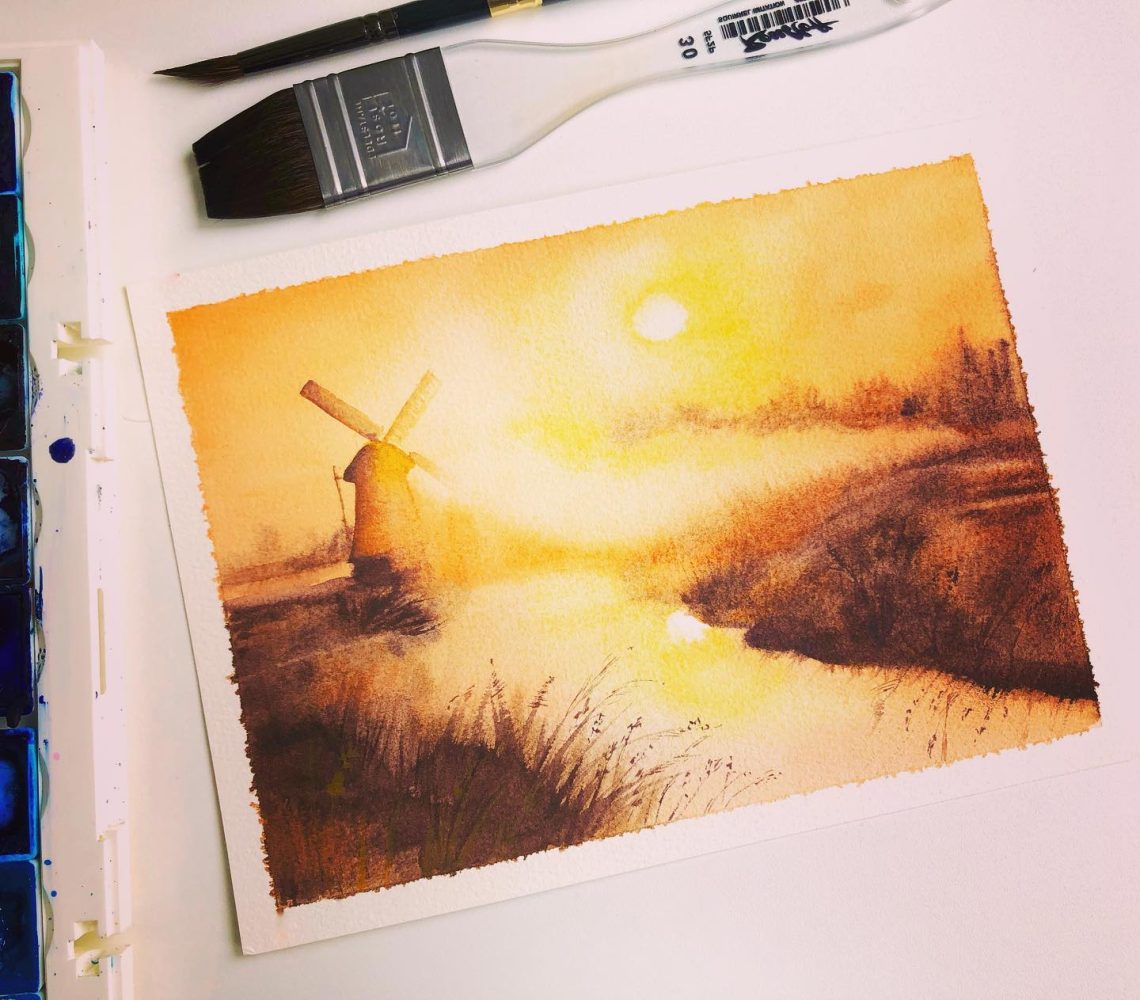I. Introduction: Embrace the Wonders of Watercolor
Embarking on a journey into the realm of watercolor painting is an enchanting way to unleash your creative spirit, particularly when landscapes serve as your canvas. This beginner-friendly medium offers an unparalleled fluidity and transparency that perfectly captures the ethereal beauty of nature. With its ability to evoke a sense of atmosphere, light, and mood, watercolor is ideal for rendering serene lakes, rolling hills, and vibrant sunsets. This article presents a series of easy landscape watercolor projects designed to ignite your passion for painting and guide you through the fundamentals of this captivating art form.
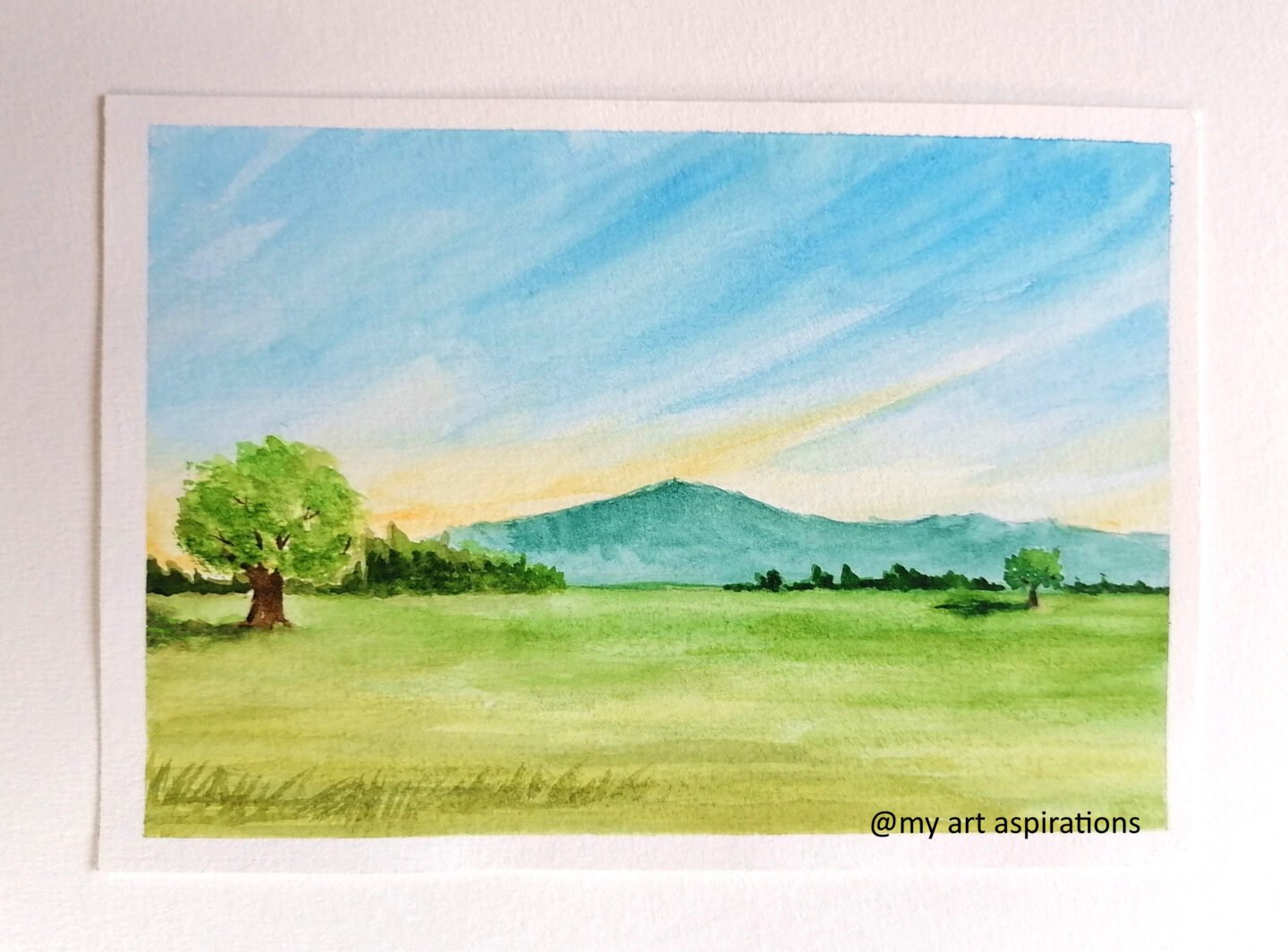
II. Project 1: Serene Seascape
Project Description: Begin your watercolor adventure with a tranquil seascape, where soft blues and gentle whites intermingle to create a calming scene. Start by sketching a simple horizon line, dividing your paper into sea and sky. For the sky, wet your paper and apply a gradient wash of blue, allowing the colors to blend naturally. Once dry, add fluffy clouds with a mix of white gouache and light blue. Next, paint the sea with horizontal strokes, gradually deepening the color towards the bottom. Use salt or a dry brush technique to simulate waves and texture. Finally, add a distant shoreline or a solitary boat to complete your peaceful seascape.
III. Project 2: Verdant Forest Glade
Project Description: Transition from the open expanse of the sea to the lush intimacy of a forest glade. Begin by loosely sketching the outline of trees and undergrowth. Apply a light wash of greens and yellows for the background foliage, then use darker shades and more concentrated pigments to define individual tree trunks and branches. Create depth by layering various shades of green, suggesting light filtering through the leaves with touches of yellow or white. For the foreground, depict wildflowers, rocks, or fallen leaves with detailed brushwork and contrasting colors. This project will teach you how to build layers, create texture, and capture the dappled light characteristic of a dense forest environment.
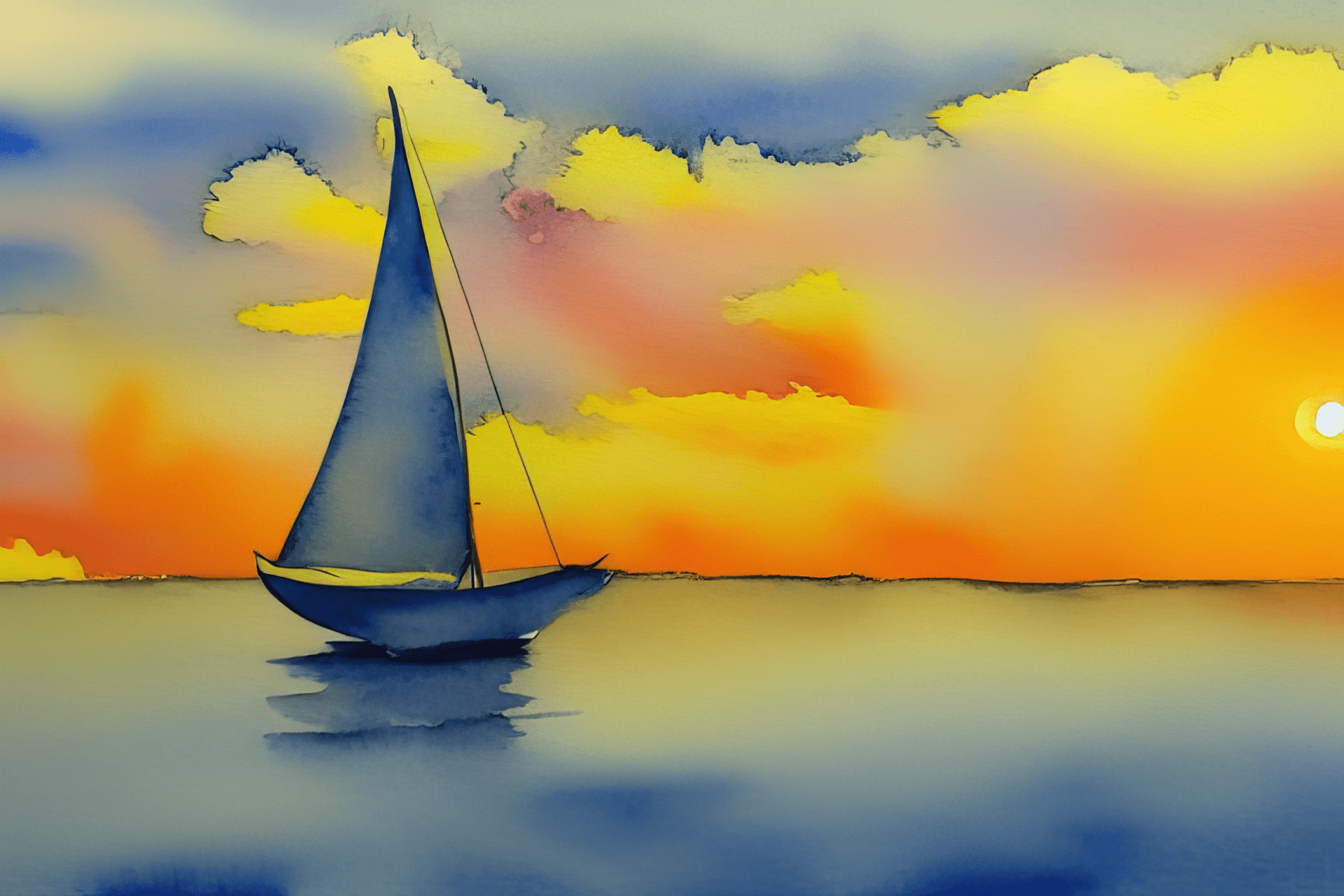
IV. Project 3: Majestic Mountain Range
Project Description: Conquer the heights with a majestic mountain range painting. Sketch the outline of the mountains, paying attention to their overlapping forms and varying sizes. Using a wet-on-wet technique, lay down a base wash of cool blues and purples for the farthest peaks. As you work towards the foreground, introduce warmer tones like browns and grays to convey distance and atmospheric perspective. Add definition to the mountains with darker shades, creating shadows and highlights to suggest the play of light across their rugged surfaces. In the foreground, paint a lake or meadow reflecting the mountains, reinforcing the sense of depth and serenity. This project will enhance your understanding of color temperature, value contrast, and composition.
V. Project 4: Golden Hour Sunset
Project Description: Capture the magic of a golden hour sunset in a vibrant watercolor painting piece. Start by painting a gradient sky, blending warm oranges, pinks, and reds from the bottom up. Leave some white spaces for the clouds, which you’ll later detail with pale yellows and pinks. For the landscape below, choose a simple silhouette such as a lone tree, a cluster of buildings, or a barren hill. Paint these elements in dark hues, allowing the vibrant sky to take center stage. Sprinkle salt or splatter diluted paint to add texture and interest to the sky. This project focuses on color harmony, dramatic contrasts, and the emotive power of a fleeting moment in nature.
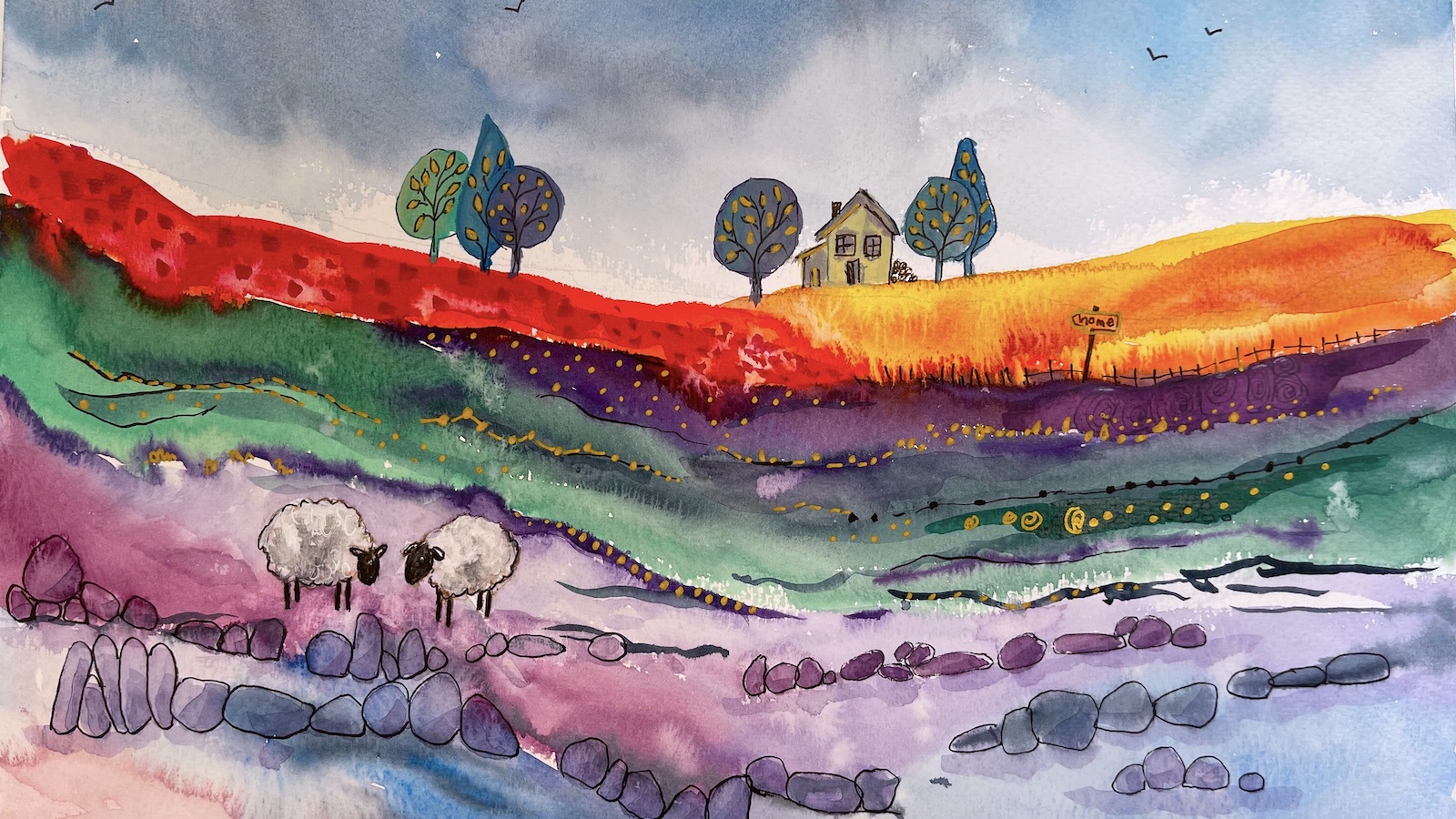
VI. Project 5: Urban Cityscape
Project Description: Venture beyond natural landscapes and explore an urban cityscape. Select a reference image featuring buildings, streetlights, and perhaps a few figures or vehicles. Sketch the basic outlines, then establish the background with a light wash of blues or grays. Paint the buildings using a combination of flat washes and dry brush techniques to create texture and depth. Add details like windows, doors, and shadows, paying attention to the direction of light. Introduce streetlights, signs, and other urban elements with bold, contrasting colors. This project will challenge you to apply watercolor painting principles to man-made structures and bustling environments.
VII. Project 6: Whimsical Fantasy Landscape
Project Description: Let your imagination run wild with a whimsical fantasy landscape. This could feature floating islands, rainbow-colored forests, or mystical creatures. Begin by sketching your imaginative scene, bearing in mind the rules of composition and perspective, albeit with a touch of creative license. Use a vibrant palette to bring your vision to life, experimenting with unconventional color combinations and techniques like spattering, lifting, or resist methods. This project encourages you to break free from realism, embracing the playful and expressive nature of watercolors to tell a unique visual story.
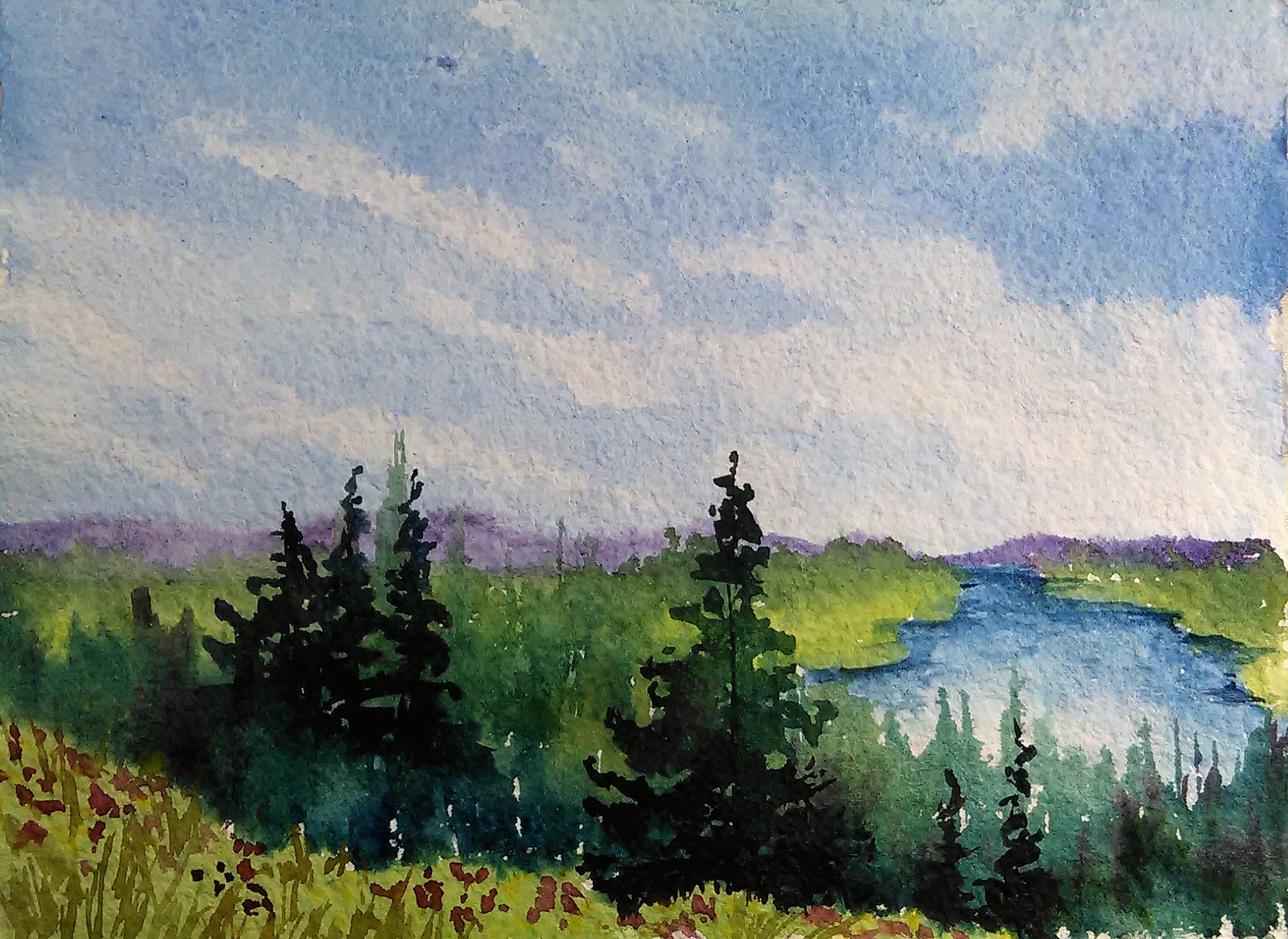
VIII. Project 7:
Ethereal Misty Morning Project Description: Delve into the enchanting world of a misty morning landscape, where soft edges and muted colors create an atmosphere of mystery and tranquility. Begin by lightly sketching the outlines of trees, hills, or buildings shrouded in mist. Wet your paper and apply a subtle wash of cool blues or grays, allowing the colors to blend and diffuse naturally. Use a dry brush technique or lift some paint with a tissue to suggest areas of thicker mist or fog. Gradually introduce warmer tones like yellows and pinks to represent the emerging sunlight, carefully balancing the opacity and transparency to maintain the dreamlike quality of the scene. In the foreground, paint silhouettes of objects like trees, benches, or boats to anchor the composition and provide a sense of depth. This project will refine your ability to manipulate color, transparency, and texture to evoke a specific mood and atmosphere.
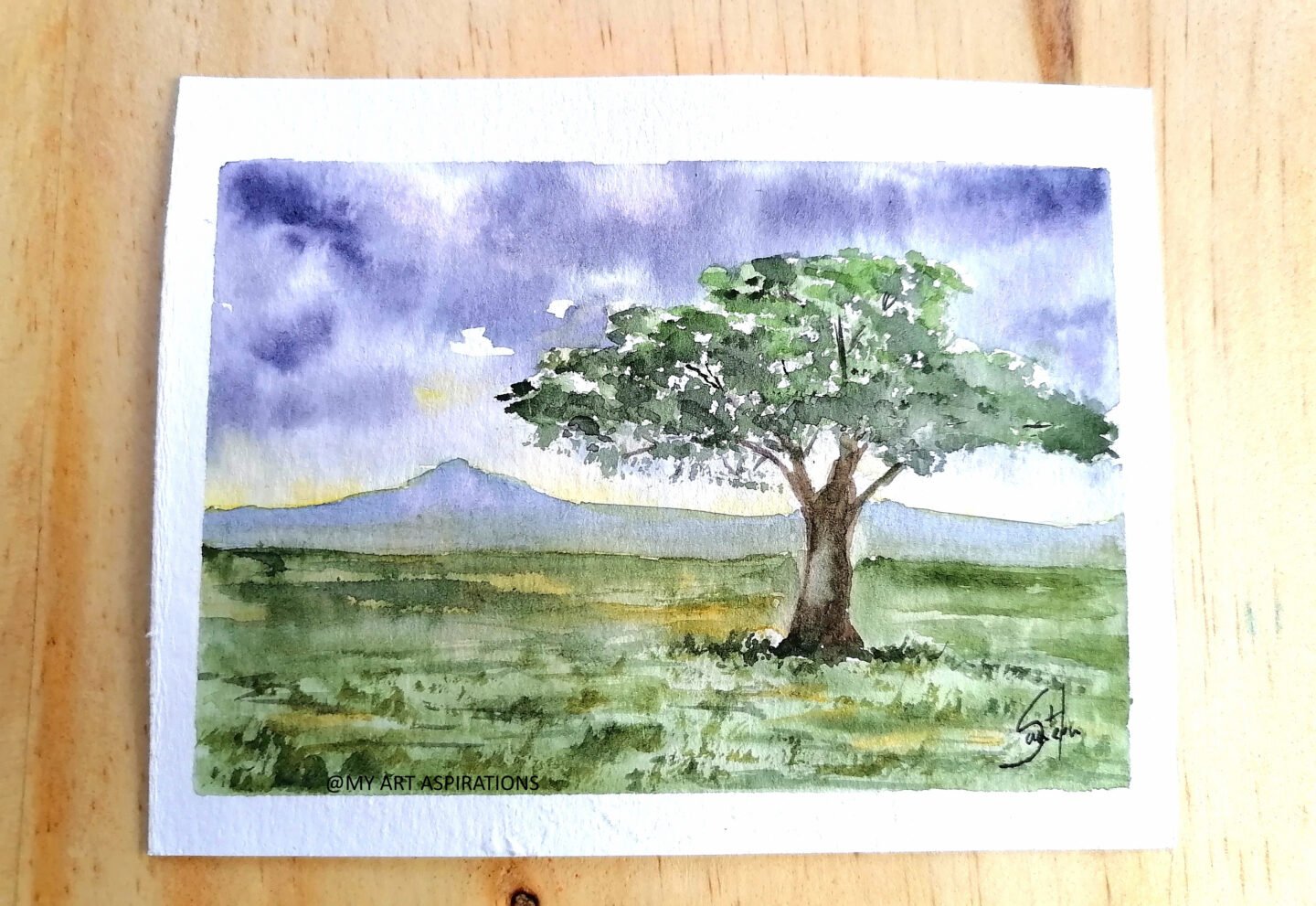
IX. Conclusion: Nurturing Your Creative Growth
As you complete these easy landscape watercolor projects, you will not only hone your technical skills but also develop a deeper appreciation for the beauty and versatility of this medium. Each project serves as a stepping stone, guiding you through essential techniques, color theory, and compositional elements. Embrace the process, relish the imperfections, and allow your creativity to flourish. Remember, the true joy of watercolor lies not in replicating reality perfectly but in capturing the essence and emotion of a landscape. So, continue this journey, explore new themes, and let your paintings be a reflection of your unique perspective and artistic voice. Happy painting!





